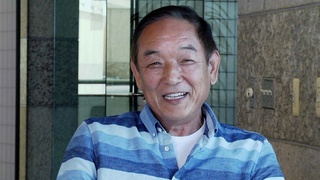Interviews
His father urged him to go to the US
This is the time, you know, when I came a … Kyoto University, and when I came back to teaching Osaka, ‘bout that time, my father started to talk about my future life. I wasn’t married that yet. And he said, “Why don’t you go, you know, to America? Why don’t you go to America?”
Because he actually, as I said, he became a missionary from landscape architect or landscape gardener. He wanted to go to Argentine to do missionary. He had thought Japan too small, such a man. He’s a big man too. But he became sick. So he had hope somebody to go to oversea.
He wanted me to, you know, extend some of the, you know, my understanding of teaching to different culture. “You don’t have to be missionary, you can be teacher, you can be … but why don’t you go America; and then to show what the Japanese is.” That’s the kind of man that he was.
Date: August 10, 2016
Location: California, US
Interviewer: Sojin Kim, John Esaki
Contributed by: Watase Media Arts Center, Japanese American National Museum






